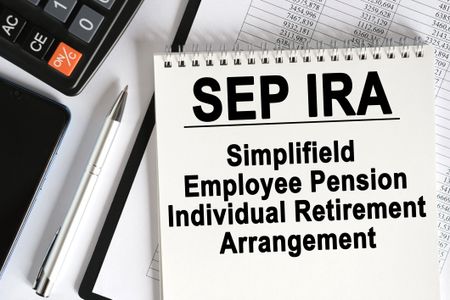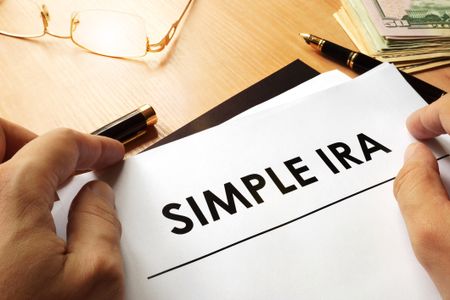The Pros and Cons of Cash Balance Pension Plans
Small business owners can benefit big time. But it's a different story for longtime pension participants.

Amid all the talk of pension plans' demise, one type of defined-benefit plan is growing fast. The trend may be a boon for older business owners who are behind on retirement savings--but it can also upend the retirement plans of long-term pension participants who are converted to new "cash balance" plans.
Cash-balance plans are like traditional defined-benefit pension plans with a 401(k) twist. As in a traditional pension plan, investments are professionally managed and participants are promised a certain benefit at retirement. But that promised benefit is stated as a 401(k)-style account balance, rather than as a monthly income stream.
Retirement savers may see the plans as a blessing or a bane--depending on how they've fared with 401(k)s or traditional pension plans. Those currently relying on 401(k)s may find that the addition of a cash-balance plan slashes their tax bills and pumps up a sagging nest egg. Those who depend on generous traditional pension plans are less enthusiastic.

Sign up for Kiplinger’s Free E-Newsletters
Profit and prosper with the best of expert advice on investing, taxes, retirement, personal finance and more - straight to your e-mail.
Profit and prosper with the best of expert advice - straight to your e-mail.
Many older business owners are turning to these plans to turbocharge their retirement savings. Cash-balance plans have generous contribution limits that increase with age. People 60 and older can sock away well over $200,000 annually in pretax contributions. In 401(k)s, total employer and employee contributions for those 50 and older are limited to $57,500.
Many boomer business owners have "directed assets into the growth of the business and haven't done a fantastic job saving for retirement," says Meghan Elwell, vice-president for quantitative analysis and research at investment-management firm Sage Advisory Services. In terms of tax-advantaged savings, she says, a cash-balance plan offers "such a huge bang for your buck."
Some large corporations and state governments, meanwhile, are setting up cash-balance plans as they seek to rein in the cost of traditional pensions. Eastman Kodak announced in July that it would shift participants in its traditional pension plan to a cash-balance plan starting next year, saying the move would reduce its pension benefit obligations by about $55 million. And states including Kansas and Kentucky have recently passed legislation establishing new cash-balance plans for public employees.
But longtime employees who have accumulated substantial benefits in a traditional pension plan may find that conversion to a cash-balance plan triggers a troubling benefit cut. One reason: While traditional pension benefits tend to be based on a participant's final working years, when salary generally peaks, cash-balance benefits are based on all working years, including those when earnings were lowest.
Morris Shockley, 66, has seen the pros and cons firsthand. As vice-president and treasurer of Hollenbeck Palms, a continuing-care retirement community in Los Angeles, he saw the organization's traditional pension plan sinking under ever-expanding liabilities during the financial crisis. To right the ship, Hollenbeck froze the pension plan and established a new cash-balance plan that took effect in 2009.
The move produced much-needed cost savings and helped the retirement community survive the recession without laying off workers, he says. But it also slashed benefits, Shockley says, noting his own benefits were cut roughly 15%. Although Shockley had once planned to retire at 66, that goal is on hold. "Right now I have no plans to retire," he says.
Supercharging Retirement Savings
It's a different story for many small employers who have turned to cash-balance plans after finding that their own or their workers' 401(k) plans are coming up short. These plans, which held $858 billion in 2012, account for 25% of all defined-benefit plans, up from about 3% in 2001, according to retirement-plan consulting firm Kravitz Inc. The number of cash-balance plans grew 22% in 2012, the latest data available, Kravitz says. Baby boomers who are sole proprietors or partners in medical, legal and other professional groups account for much of the growth, plan consultants say.
Dr. Robert Master, a retired cardiologist in Palo Alto, Cal., helped set up a cash-balance plan for his medical group in 2000, after a review of his fellow doctors' 401(k) accounts left him "quite concerned," he says. Given the area's high housing costs, some doctors weren't maxing out their 401(k)s, and others got clobbered in the dot-com stock crash, he says. Even for doctors on the brink of retirement, "the balances to me seemed inadequate," says Master, 63.
Today, doctors in the group's cash-balance plan "give me high-fives," Master says. If you take full advantage of both the cash-balance plan and the 401(k), he adds, "you'll have enough money to retire without taking excessive risks."
Whether they are running one-man operations or have a handful of employees, older business owners making more than $250,000 a year may be ideal candidates to establish a cash-balance plan. Plan contributions reduce adjusted gross income, resulting in potentially significant tax savings for people "waking up to this plethora of new taxes" that kicked in last year, says Kravitz president Daniel Kravitz. Those include a new levy on net investment income and higher payroll tax.
Business owners should expect to make cash-balance contributions for rank-and-file employees amounting to roughly 5% to 8% of pay, compared with the 3% contribution that's typical in a 401(k) plan. Participant accounts also receive an annual "interest credit," which may be a fixed rate, such as 5%, or a variable rate, such as the 30-year Treasury rate. At retirement, participants can take an annuity based on their account balance. Many plans also offer a lump sum, which can be rolled into an IRA or another employer's plan.
The plans can be more costly to employers than 401(k) plans, in part because an actuary must certify each year that the plan is properly funded, Kravitz says. Typical costs include $2,000 to $5,000 in setup fees, $2,000 to $10,000 in annual administration fees, and investment-management fees ranging from 0.25% to 1% of assets.
For many older business owners, the tax advantages that come with plowing six-figure annual contributions into the plans far outweigh such costs. For a 55-year-old, for example, the cash-balance contribution limit is $166,000, while a 65-year-old's limit is $225,000.
Get Kiplinger Today newsletter — free
Profit and prosper with the best of Kiplinger's advice on investing, taxes, retirement, personal finance and much more. Delivered daily. Enter your email in the box and click Sign Me Up.

-
 April RMD? Five Tax Strategies to Manage Your 2025 Income
April RMD? Five Tax Strategies to Manage Your 2025 IncomeTaxable Income The April 1, 2025, deadline for required minimum distributions (RMDs) is fast approaching for retirees who turned 73 in 2024.
By Kelley R. Taylor Last updated
-
 Rising AI Demand Stokes Undersea Investments
Rising AI Demand Stokes Undersea InvestmentsThe Kiplinger Letter As demand soars for AI, there’s a need to transport huge amounts of data across oceans. Tech giants have big plans for new submarine cables, including the longest ever.
By John Miley Published
-
 457 Plan Contribution Limits for 2025
457 Plan Contribution Limits for 2025Retirement plans There are higher 457 plan contribution limits for state and local government workers in 2025. That's good news for state and local government employees
By Kathryn Pomroy Last updated
-
 Medicare Basics: 11 Things You Need to Know
Medicare Basics: 11 Things You Need to KnowMedicare There's Medicare Part A, Part B, Part D, Medigap plans, Medicare Advantage plans and so on. We sort out the confusion about signing up for Medicare — and much more.
By Catherine Siskos Last updated
-
 The Seven Worst Assets to Leave Your Kids or Grandkids
The Seven Worst Assets to Leave Your Kids or Grandkidsinheritance Leaving these assets to your loved ones may be more trouble than it’s worth. Here's how to avoid adding to their grief after you're gone.
By David Rodeck Last updated
-
 SEP IRA Contribution Limits for 2025
SEP IRA Contribution Limits for 2025SEP IRA A good option for small business owners, SEP IRAs allow individual annual contributions of as much as $69,000 in 2024 and $70,000 in 2025..
By Jackie Stewart Last updated
-
 Roth IRA Contribution Limits for 2025
Roth IRA Contribution Limits for 2025Roth IRAs Roth IRA contribution limits have gone up. Here's what you need to know.
By Jackie Stewart Last updated
-
 SIMPLE IRA Contribution Limits for 2025
SIMPLE IRA Contribution Limits for 2025simple IRA The SIMPLE IRA contribution limit increased by $500 for 2025. Workers at small businesses can contribute up to $16,500 or $20,000 if 50 or over and $21,750 if 60-63.
By Jackie Stewart Last updated
-
 457 Contribution Limits for 2024
457 Contribution Limits for 2024retirement plans State and local government workers can contribute more to their 457 plans in 2024 than in 2023.
By Jackie Stewart Published
-
 Roth 401(k) Contribution Limits for 2025
Roth 401(k) Contribution Limits for 2025retirement plans The Roth 401(k) contribution limit for 2025 increased, and workers who are 50 and older can save even more.
By Jackie Stewart Last updated